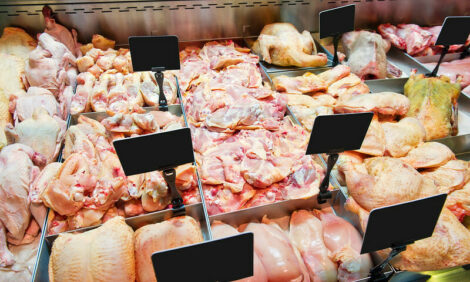



MLA: Weekly Cattle Summary
AUSTRALIA - This report is a collection of weekly cattle price summaries from each Australian territory by Meat & Livestock Australia (MLA).
Western Australia
Rain and cooler temperatures
There was a general improvement in seasonal and feed conditions again this week, as a solid cold front and mid-level convergence brought solid rainfall to the southern districts of WA. Falls were predominately between 15mm to 30mm with regions in the south east around Esperance again recording the largest falls.
Following on from previous weeks solid rainfall and the current warm and mild temperatures, there has been solid germination in paddocks and strong grass growth levels.
Despite this, supplementary feeding levels remain high and a daily part of the farming day with calving activity in the south continuing to rise. Conditions in the north remain reasonable with further thunderstorm activity reported.
Temperatures have begun to lower and this will have a positive affect on mustering activity in the near future.
Tighter supplies encourage cow prices
The combination of the recent rainfall and the long weekend impacted on physical saleyard numbers. This was predominately due to the cancellation of the Mt Barker sale, but also there were lower supplies at both Muchea and the southwest.
The supplies of prime trade and heavy weight steers and heifers remained tight, weaner supplies were fair with cows accounting for a reasonable percentage of total volumes. Trade demand for the limited supplies of trade and heavy weight steers and heifer’s improved with reasonable price increases realised.
Demand for weaner steers and heifers remains buoyant from both the feeder and restocker sectors, with the latter perhaps reflecting the recent benefit from rainfall.
A tightening in overall cow numbers continues to encourage a more aggressive trade demand that saw further price increases in all categories this week. This increased demand, however was not reflected in heavy bull classes, which resulted in cheaper prices.
New South Wales
Cheaper prices and the shorter slaughter week reduce numbers
The shorter working week and lower prices reduced numbers by 53 per cent throughout NSW MLA NLRS markets. The early market of Wagga defied the trend and increased 7.5 per cent week-on-week. Forbes and Tamworth both eased back 16 per cent as Gunnedah slipped 32 per cent .
Consignments nearly halved at CTLX Carcoar as the Scone market lowered 72 per cent .The northern Casino market only penned 360 cattle compared to 1,700 head yarded the previous week. The Dubbo market was cancelled due to the holiday weekend.
Average quality continues to be mixed
Markets reported increased supplies of plainer cattle entering the competition with 71 per cent of vealer steers returned to the paddock or sold to feeder orders. Throughout the state 88 per cent of yearling steers and 70 per cent of yearling heifers also sold to restocker and feeder orders.
Only 483 head of prime conditioned heavy weight steers went to slaughter orders at reported markets, down 33 per cent week-on-week. Cow numbers halved and restockers were quiet in the competition with the majority selling to export processors. Most markets stated processor competition was weaker or even absent at some sales.
Competition continues to weaken
Although all weights and grades reduced in numbers, prices continue to slip throughout most categories. Vealer steers were less affected as the lighter weights selling to restockers remained on average firm, as the heifer portion lost 8¢ to 11¢/kg.
Yearling steers to feeder and restocker orders remained similar in prices as yearling heifers sold 5¢/kg cheaper to the feeders and remained firm to a shade dearer to the restockers. Prime conditioned pens to trade and butcher purchases lost 6¢/kg.
Heavy weight steers to slaughter lost 4¢/kg as the heifer portion slipped by similar amounts. Cow categories lost around 7¢ overall to average 110¢/kg. The best covered heavy weight cows to the processors ranged from 105¢ to 134¢, as restockers paid 136¢/kg to secure their selections.
Victoria
Reduced supply
Total yardings across the state have dropped 57 per cent on last week, mainly due to the approaching Easter break with Warrnambool, Bairnsdale and Colac sales not operating. Cattle supply at Ballarat increased by 38 per cent , while numbers at Shepparton decreased by a quarter.
Throughput at Leongatha was down substantially by 95 per cent as high numbers were yarded last week, while yardings at Wodonga slipped by 59 per cent . Consignments at Camperdown and Pakenham remained relatively unchanged week-on-week.
Plain to good quality
There was a reduced field of buyers in attendance across most markets, with competition subdued in some categories. There was varied demand at Ballarat with good quality young cattle offered, while Wodonga had competing restocker interest on plainer lines of secondary yearling steers and heifers.
There were predominantly plain to good condition dairy cows yarded at Leongatha, while young cattle at Pakenham sold to high prices due to high quality supply. There was generally poor to plainer quality of grown steers and cows at Camperdown, with mixed quality of young cattle.
Young cattle prices ease
Heavy C3 vealer steers were 9¢ higher on 208¢, while medium C2 vealer heifers to processors ranged from 130¢ to 205¢/kg. Heavy C3 yearling steers fell 7¢ to make 186¢, while heavy D3 yearling heifers to slaughter dropped 1¢ to average 162?/kg. Heavy C3 grown steers remained unchanged to hold firm at 179¢, while light D3 grown heifers declined 2¢ ranging from 119? to 160¢/kg.
Medium D1 manufacturing dairy steers were 8? lower on 118¢, while heavy D1 dairy cows reduced 5? to make 101¢/kg. Light C2 bulls to processors rose 10¢ ranging from 110¢ to 176¢/kg.
Queensland
Yardings decline
The supply of stock at physical markets covered by MLA’s NLRS varied across the state, and with the absence of the Longreach sale overall numbers reduced by 23 per cent .
Supply at Dalby was down by 53 per cent , however the continuing harsh conditions in the west of the state resulted in the largest yarding at the Roma store sale since NLRS started reporting. The dry conditions in the larger cattle producing areas of the state was reflected in the quality at some markets.
Nevertheless, a very large good quality single vendor line of medium weight yearling steers from central Queensland helped lift the standard at the Roma store sale. The approaching two short working weeks reduced the supply of heavy grown steers to export slaughter to around 100 head, and virtually no bullocks were penned. The supply of cows also declined by 47 per cent .
Young cattle prices vary
Most classes of young cattle lost ground in price, however a small selection of vealer steers and heifers, ideally suited to the local butcher trade, went against this trend to improve in price.
A handful of the very best vealer heifers at Warwick made to 217.2¢ to average 203¢, while the remainder struggled to average 160¢/kg. Lightweight yearling steers experienced a wide variation in price with well bred lines reaching 213.2¢ to average 185¢/kg.
A large number of D muscle lines averaged 156¢/kg. Medium weight feeders averaged in the mid-170¢ range and heavyweights managed to hold firm at 166¢/kg. Yearling heifers across most classes averaged in the 150¢/kg range with poorer quality lines at 138¢/kg.
The very small selection of heavy grown steers sold to firm demand with 3 scores at 157¢, and the better 4 scores averaging 165¢/kg. Medium weight 2 score cows averaged 113¢ and 3 scores close to 123¢/kg. Good heavy cows averaged 4¢ less with most in the early 130¢/kg range.
TheCattleSite News Desk


